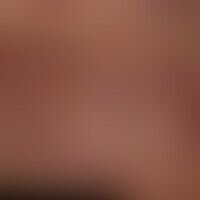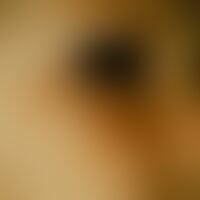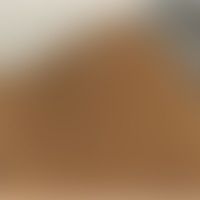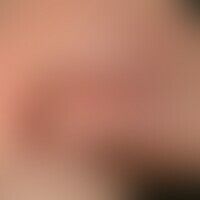Image diagnoses for "skin-colored"
267 results with 583 images
Results forskin-colored
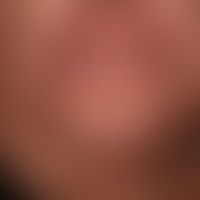
Folliculotropic mycosis fungoides C84.0
Mycosis fungoides follikulotrope: generalized clinical picture; for about 8 weeks massive painless lymph node swelling on the right side subementally.
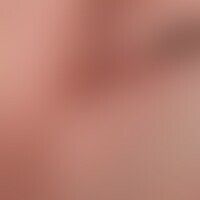
Basal cell carcinoma nodular C44.L
Basal cell carcinoma, nodular. 2.5 years of persistent, slowly growing, now 1.8 x 2.3 cm large, centrally ulcerated tumor with telangiectasias in the lower border wall at the right nasolabial fold of a 69-year-old patient.

Lipedema R60.9
Lipedema: bilateral, initially painless, and after years of existence painful, symmetrical, initially discrete, later increasing, partly jodhpur-like fatty degeneration of the legs. the circumference of the thigh is disproportionately enlarged in comparison to the relatively slim upper body. back of the foot and toes are not swollen (Stemmersch's sign: negative). tendency tohaematomas

Syringome disseminated D23.L
Syringome disseminated: multiple, closely spaced, confluent in places (upper orbital rim), skin-coloured, 0.1 - 0.2 cm large, firm nodules, no itching.

Vascular malformations Q28.88
Malformation, vascular: venousmalformation with circumscribed, painless soft tissue swelling (circled); ectatic subcutaneous veins.

Cheilitis actinica (overview) L57.8
Cheilitis actinica chronica, chronic stationary, sharply defined, firmly adherent, whitish keratoses on the lower lip of a 71-year-old woman with chronic Cheilitis actinica.

Shingles B02.21
Zoster oticus (Ramsay-Hunt Syndrome): pronounced right-sided facial nerve palsy lasting about 3/4 years as a complication of zoster oticus; release of the present illustration by Dr. Martin Hermans, MD.
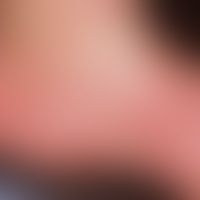
Skabies B86
Scabies (in the infant). strongly itching blisters and blisters in the area of the sole of the foot in a toddler. infants tend to have an "excessive" blistery inflammatory reaction to the mite infection when infected for the first time.






